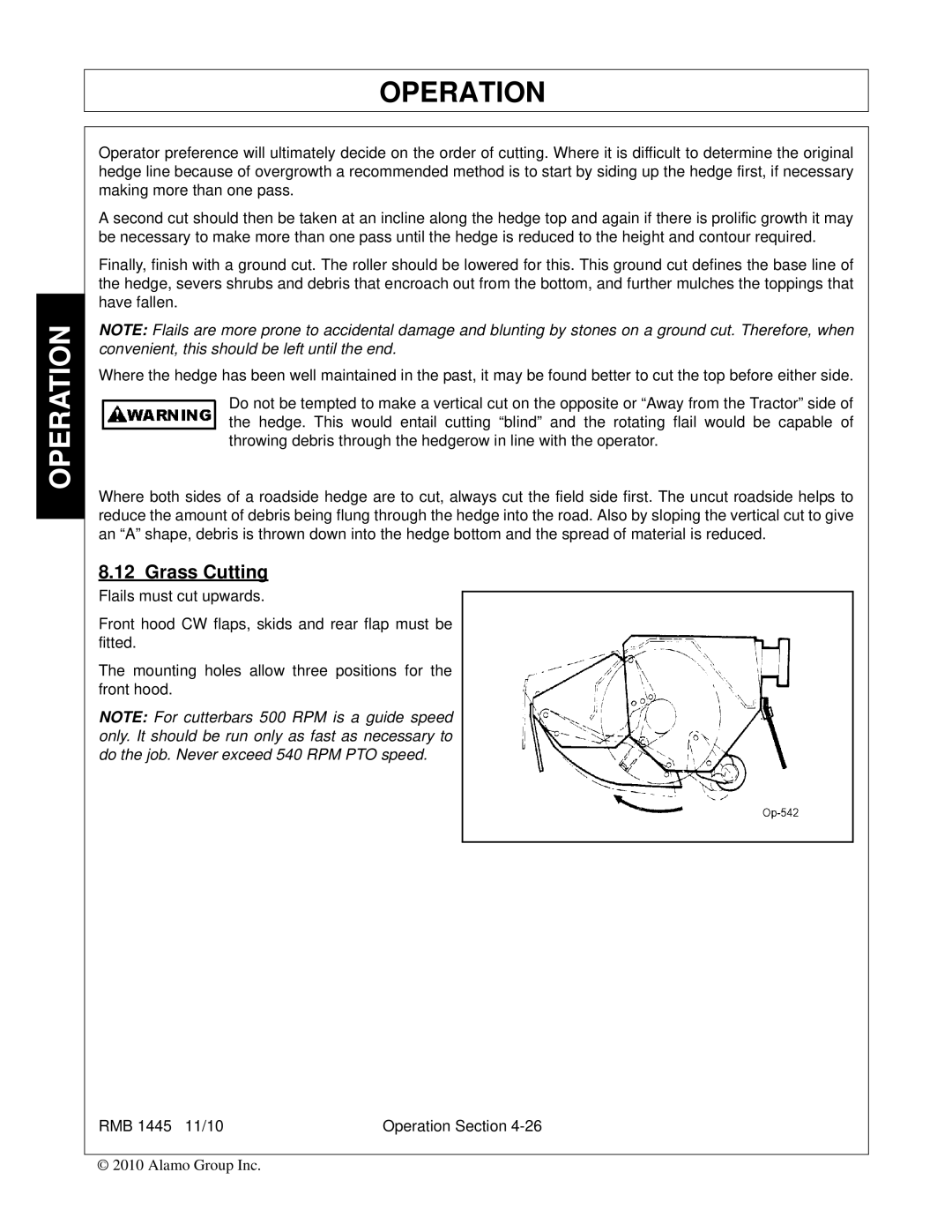
OPERATION
OPERATION
Operator preference will ultimately decide on the order of cutting. Where it is difficult to determine the original hedge line because of overgrowth a recommended method is to start by siding up the hedge first, if necessary making more than one pass.
A second cut should then be taken at an incline along the hedge top and again if there is prolific growth it may be necessary to make more than one pass until the hedge is reduced to the height and contour required.
Finally, finish with a ground cut. The roller should be lowered for this. This ground cut defines the base line of the hedge, severs shrubs and debris that encroach out from the bottom, and further mulches the toppings that have fallen.
NOTE: Flails are more prone to accidental damage and blunting by stones on a ground cut. Therefore, when convenient, this should be left until the end.
Where the hedge has been well maintained in the past, it may be found better to cut the top before either side.
Do not be tempted to make a vertical cut on the opposite or “Away from the Tractor” side of the hedge. This would entail cutting “blind” and the rotating flail would be capable of throwing debris through the hedgerow in line with the operator.
Where both sides of a roadside hedge are to cut, always cut the field side first. The uncut roadside helps to reduce the amount of debris being flung through the hedge into the road. Also by sloping the vertical cut to give an “A” shape, debris is thrown down into the hedge bottom and the spread of material is reduced.
8.12 Grass Cutting
Flails must cut upwards.
Front hood CW flaps, skids and rear flap must be fitted.
The mounting holes allow three positions for the front hood.
NOTE: For cutterbars 500 RPM is a guide speed only. It should be run only as fast as necessary to do the job. Never exceed 540 RPM PTO speed.
RMB 1445 11/10 | Operation Section |
© 2010 Alamo Group Inc.
